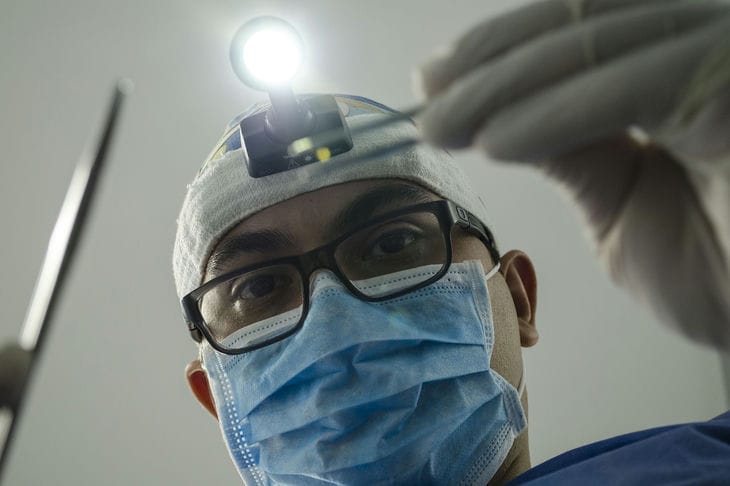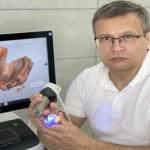Crooked teeth and malocclusions are not uncommon.
They affect a person’s appearance, the functionality of the dental system, and can be risk factors for the development of various diseases.
Moreover, we are not only talking about the oral cavity and caries or periodontitis, but also about the health of the entire body: problems with the gastrointestinal tract or respiratory organs are frequent companions of malocclusion, says Igor Sidorovich .

We look into the main causes of curvature and modern ways to correct problems.
Genetic predisposition
Heredity plays a key role in the formation of the anatomy of teeth and jaws. If your close relatives had problems with crooked teeth, there is a high probability that you have also encountered this problem.
This factor cannot be influenced. But if you know about it, you can take it into account and contact an orthodontist in time - the first visit should be scheduled at the age of 2-3 years, when all the baby teeth have grown.
If there are no special problems, then the next visit should take place at 5-6 years, when the milk bite changes, and then at 11-12 years, when the change has already taken place. The doctor himself will tell you whether additional visits to the orthodontist are necessary if he detects any violations.
Wisdom teeth
Many dentists call "eights" an atavism - an evolutionary rudiment in the human body. The jaw of Homo sapiens has changed, become smaller, but the teeth, which probably previously participated in the active chewing function, remained.
Modern man eats soft food, teeth do not receive the functional load for which they are designed, and jaw bones do not develop sufficiently.
And wisdom teeth, unfortunately, still have a high potential for eruption. Yes, there are people whose jaw size allows the teeth to "fall into place" without affecting the entire dental row, but the opposite cases are also very common.
When they appear, the "eights" displace other teeth. Removal does not always correct the situation: the front teeth have already become accustomed to the new position.
Development of the dental system
Parents feed their child chopped food for a long time, do not give solid foods, do not pay attention to frequent thumb or pacifier sucking, do not stop chewing pencils and pens during the period of changing the milk bite.
All this leads to the jaw not receiving the necessary load or receiving the wrong one. This contributes to the curvature of the teeth.
Diseases of the ENT organs
Impaired nasal breathing is a risk factor. And one of the reasons for underdevelopment of the upper jaw is adenoids.
For a variety of reasons, including hereditary predisposition and reduced immunity, glandular tissue grows, making nasal breathing difficult or stopping - the nose is constantly blocked.
Mouth breathing is formed, in which the bones of the upper jaw narrow and the teeth on it become incorrectly positioned. Underdevelopment also affects the occlusion (closing) of the teeth - an incorrect bite develops.
Early loss of baby teeth
If there is "free space" in the dental row, the other teeth tend to occupy it. This means that they lean, "run into" each other, crowd together or, on the contrary, "move apart", creating unnecessary gaps.
This description is true for both permanent teeth and baby teeth. But for the latter, there is another danger.
The removed root of a baby tooth does not dissolve, gradually giving way to the "legitimate" place of the molar. Its place after sudden removal is quickly taken by neighboring roots and teeth.
Therefore, when it is time for the permanent tooth to erupt, it will face a lack of space and will be in the wrong position.
And early removal of baby teeth leads to the fact that it becomes more difficult for the child to chew. He unconsciously begins to do this only on one side, where the dental row is full, thereby unevenly loading the teeth. This contributes to the incorrect formation of the jaw bones.
Basic methods of correction
Let us note right away that bite correction and teeth straightening are impossible without the participation of an orthodontist. No bite correction exercises or external bandages work.
You need to act in two directions: firstly, treat somatic diseases such as adenoids, secondly, monitor your children's diet and get rid of bad habits such as thumb sucking, and finally, consult an orthodontist who will recommend a correction option that is right for you.
The most well-known method is braces. These are arches with locks and fasteners on the teeth. Doctors have accumulated a huge amount of experience in their use - this is an effective and understandable method.
Some limitations: enhanced oral hygiene is required, and metal wires and fasteners can injure the mucous membrane. Braces allow the doctor to precisely control the movement of teeth and achieve their optimal position.
A more modern method is aligners. This is a set of special transparent caps that are successively put on the teeth and gradually give them the correct position.
An important advantage of aligners is their invisibility, which is especially important for adult patients. Another advantage is that they are available for children, for ages 6-10.
Braces are installed only on permanent teeth of teenagers and adults. And children's special caps are also applicable during the period of bite change, in fact, the existing bite and position of the teeth are not corrected, but the correct one is immediately formed.
There is another method that is designed to correct minor cosmetic defects - veneers. These thin overlays on the front surface of the teeth are a type of micro-prosthesis.
The method is suitable when, for example, one tooth in a row is slightly shifted back. The veneer on it will be slightly thicker than the other overlays, and thus an absolutely even row will be created.
Correcting crooked teeth with veneers is a simple and quick procedure, taking much less time compared to orthodontic treatment. But they cannot correct malocclusion or significant curvature.
It is also worth noting that before installing veneers, teeth are ground down. If installed correctly, this will not affect health and will not cause caries.
But do you really want to grind down the enamel of a large number of teeth to mask one crooked one? Correcting the position of the tooth with aligners for such a minor defect will be quick.
Earlier it became known how much sugar can be put in coffee and tea.

